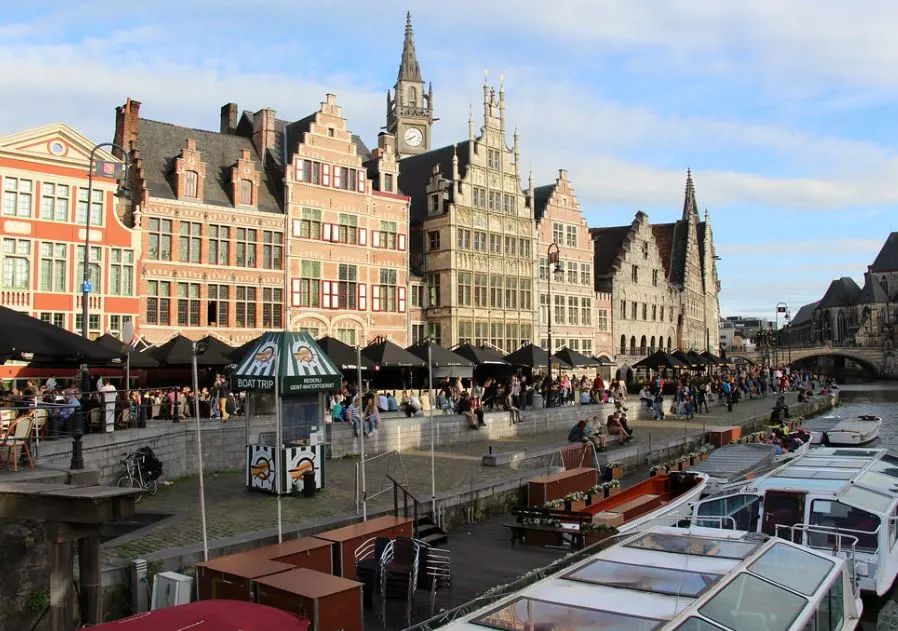Although Belgium is one of the smallest countries in Europe, it has a very interesting history and diverse architectural landscape.
It’s home to several medieval cities that were among the largest and most important urban centers in northern Europe.
Ghent was established on the confluence of the Leie and Scheldt Rivers and this settlement grew to become the largest city in Northern Europe in the Late Middle Ages.
This resulted in a construction boom and several Gothic buildings from this period still dominate the city’s skyline today.
When you walk around Ghent, you’ll be able to breathe the rich history similar to other cities such as Bruges and Antwerp. This is especially the case in the picturesque city center.
Today, the metropolitan area of the city is the 4th-most populous in Belgium today with just over 560,000 inhabitants.
Let’s take a closer look at some of the most famous buildings in Ghent.
1. Saint Peter’s Abbey and Church
The first two major structures that were built in Ghent were Saint Peter’s Abbey and Saint Bavo’s Abbey. These were founded by Saint Amandus in the 7th century in an attempt to convert the pagan citizens in this area to Christianity.
Saint Bavo’s Abbey was demolished in the 16th century by Charles V, Holy Roman Emperor as a response to a rebellion in the city he was born in. Saint Peter’s Abbey and its 17th-century Baroque church have been restored in the 20th century and currently house a museum and exhibition center.

2. Saint Bavo’s Cathedral

Saint Bavo’s Cathedral is an amazing Gothic cathedral that dominates the view of Ghent’s city center. The construction of this church, which was built on at least two former buildings, was started in 1274 and completed in the year 1569.
It’s located in the heart of the city, a square known as Saint Bavo’s Square. This is the ultimate location for tourists in Ghent.
You should not only visit this cathedral to admire its Gothic architecture but also because it houses one of the most amazing artworks ever completed. The so-called Ghent Altarpiece (the 1420s-1432) by the brothers van Eyck is housed in the church. A sculptural group commemorating the painters is located just next to it.

3. Gravensteen
The Gravensteen is one the most amazing castles in Europe and is located just north of the historic heart of the city. This medieval structure was originally completed in 1180 on the site of an even older building and served as the main residence of the Counts of Flanders until the year 1353.
The castle fell in disuse as a fortification when the Cunts moved to the nearby “Prinsenhof” or “Hof ten Walle.” It was subsequently used as a prison, and a factory, and was even scheduled to be demolished at one point. Luckily this didn’t happen so you can still admire this remarkable historic building in Ghent today.
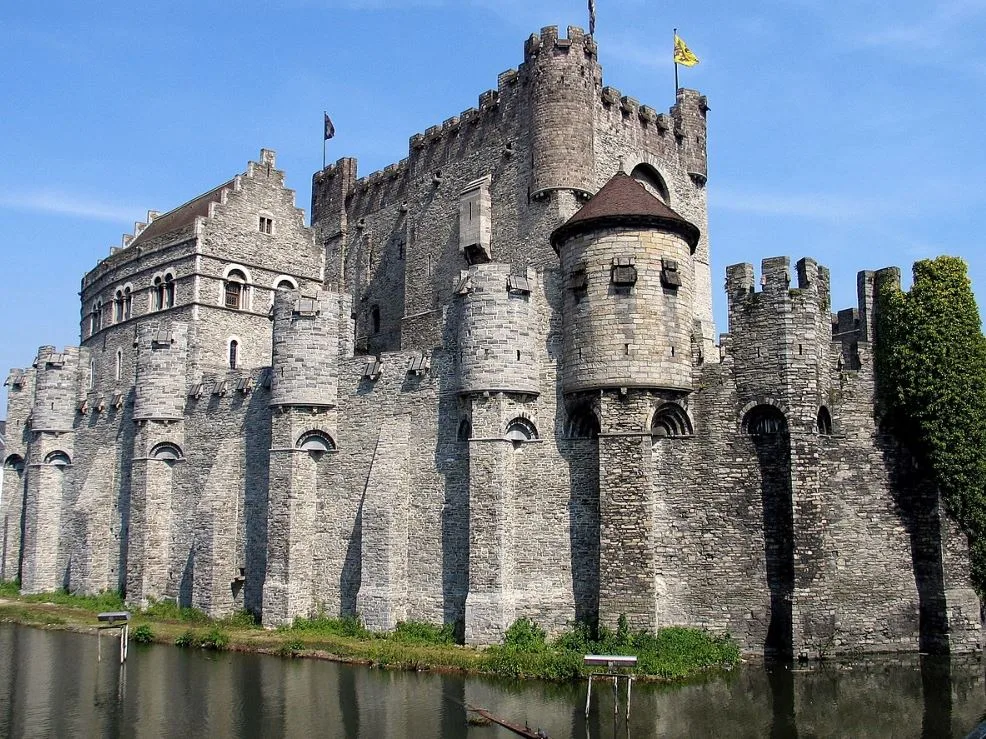
4. Belfry of Ghent
The Belfry of Ghent stands right next to Saint Bavo’s Cathedral in the historic heart of Ghent and majestically overlooks the city.
This famous bell tower stands 91 meters (299 feet), a height that makes it the tallest belfry in Belgium. Granted, the Belfry of Bruges is only slightly shorter at 83 meters (272 feet).
The Belfry was completed between 1313 and 1380, a period in history when Ghent was one of the largest cities in Europe with approximately 65,000 inhabitants. The upper part of the tower isn’t original and was only added after World War I in the Gothic Revival style but based on the original 14th-century plans.
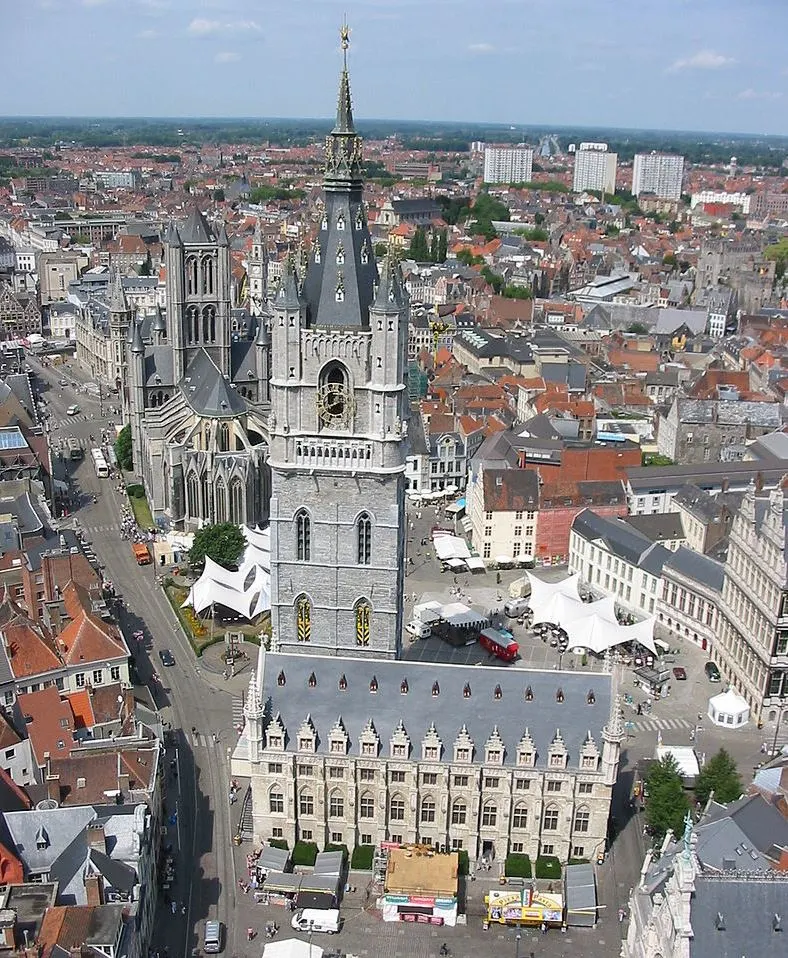
5. Saint-Nicholas Church
Saint-Nicholas Church is the third major structure in the heart of Ghent as you can pretty much walk past this famous church, the Belfry of Ghent, and Saint Bavo’s Cathedral in a couple of minutes. It’s the oldest of the three buildings and was completed in the 13th century.
It replaced an even older Romanesque building that stood in this location and incorporates the distinctive Scheldt Gothic architectural style. The slender towers on the building’s corners and the robust tower in the center are prime examples of this style. The Blue-gray stones were carried in Tournai and brought to the city via the Scheldt River.

6. Hotel d’Hane-Steenhuyse
Hotel d’Hane-Steenhuyse is a so-called “Hôtel Particulier,” a city mansion that was constructed to emphasize the wealth of the people who commissioned it. It’s located just a few blocks south of Saint Nicholas Church and was named after the D’Hane de Steenhuyse family who lived here.
The Neoclassical building was completed between 1768 and 1773 and features two distinctive façades. The front incorporates the traditional Louis XV style and faces the famous Veldstraat in Ghent. The rear façade and its garden were constructed in the pure Louis XVI style. It’s one of the most stunning buildings in Ghent, that’s for sure.
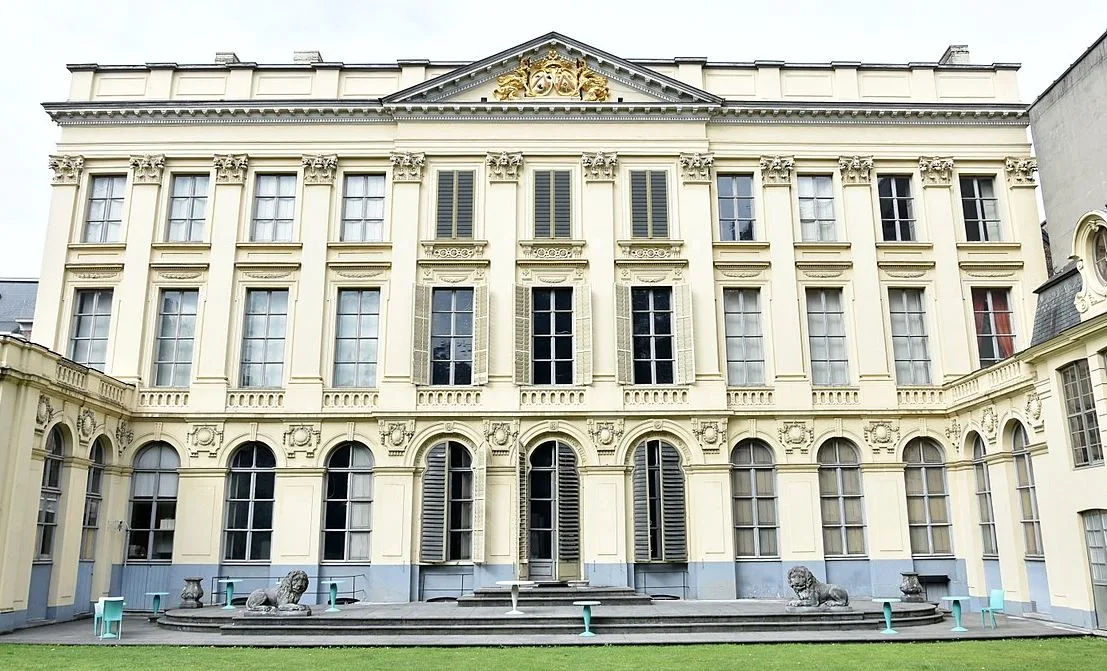
7. Vrijdagmarkt
The Vrijdagmarkt is one of the most amazing squares in Ghent and was named after the weekly tradition of Friday markets that take place here. It’s located a few blocks north of the Belfry of Ghent and is considered to be one of the oldest squares in the city.
Not only is it the oldest but it’s also one of the largest with dimensions of about 100 x 100 meters (328 x 328 feet). The center of the square is decorated with a local hero named Jacob van Artevelde, a man who defied the French, and opulent guild houses. The two Art Nouveau buildings from the early 20th century were constructed by the Socialist Union of Ghent.
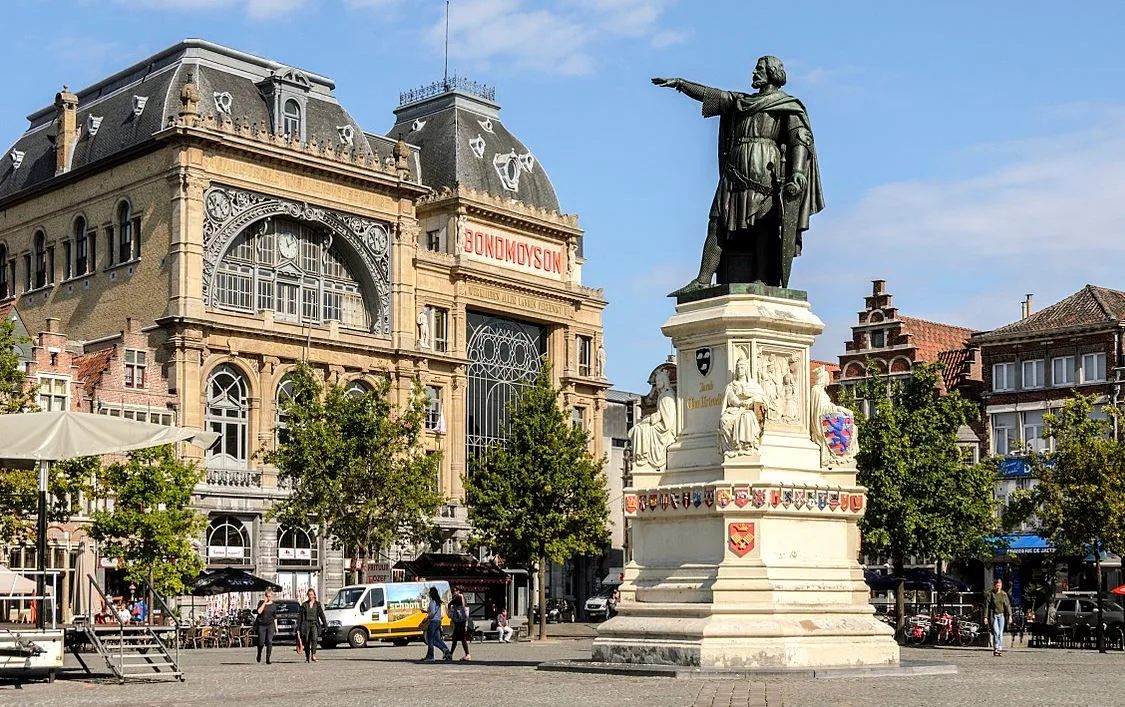
8. Geeraard de Duivelsteen
Geeraard de Duivelsteen is yet another historic building in the heart of Ghent that can be found just southeast of Saint Bavo’s Cathedral. This Gothic building was constructed in the 13th century and served as a fortification that protected the “Portus Ganda,” the port of Ghent.
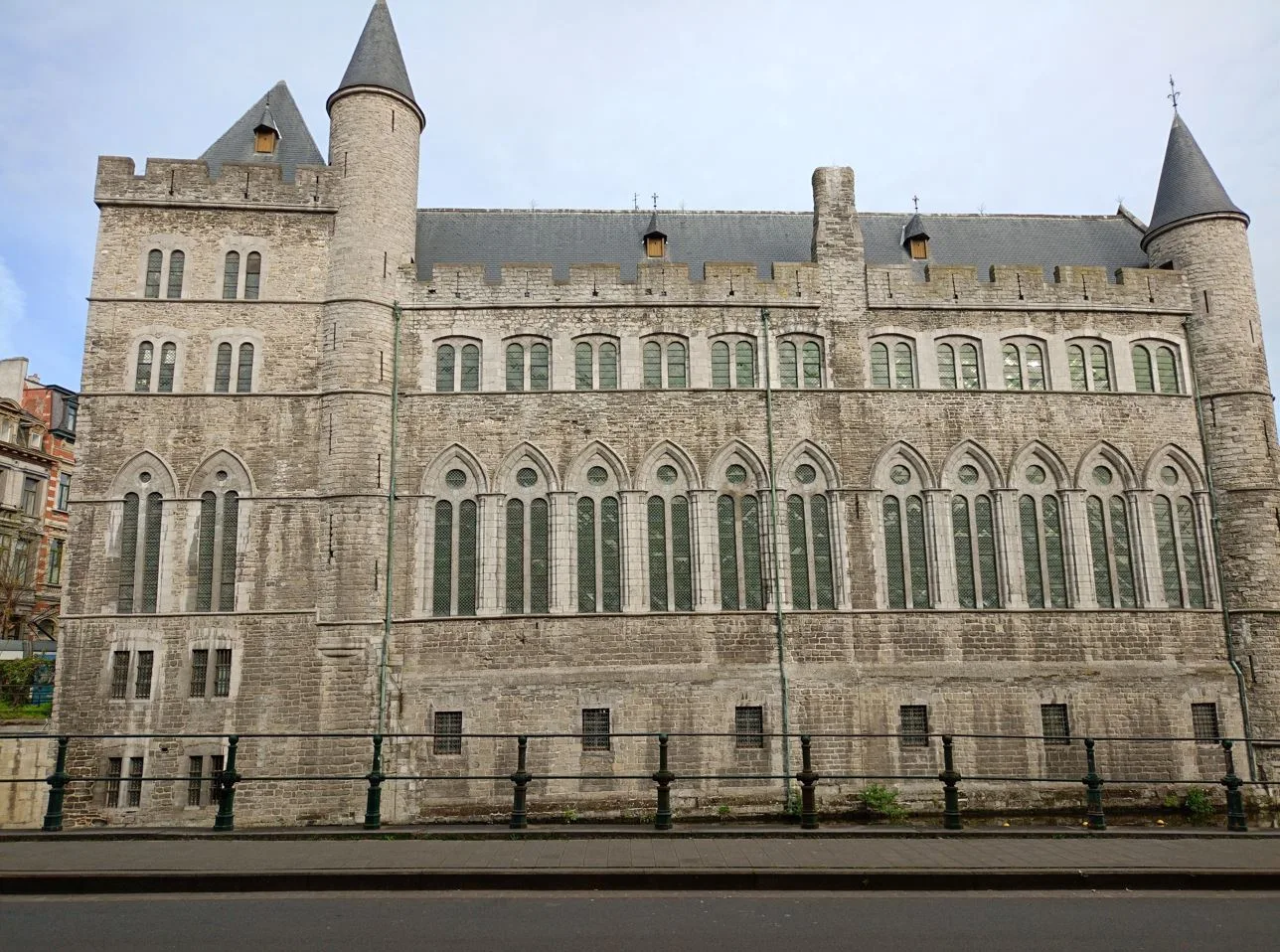
The building was named after a famous knight from Ghent named Geeraard Vilain (1210-1270), a man who was nicknamed “Geeraard de Duivel” or “Geeraard the Devil,” a reference to his dark appearance. Just like the Gravensteen, it served countless purposes throughout the centuries.
9. Vooruit
The Vooruit is the common name of a cultural center known as the “Kunstencentrum Vooruit.” This translates to “Forward Arts Center” and as you surely expected, this historic building in Ghent is mainly used for cultural events such as concerts and exhibitions.
It was constructed between 1911 and 1914 and was another building that was commissioned by the socialist movement in Ghent. If you want to enjoy a concert or theatrical performance, then this is one of the Vooruit is definitely one of the best places to visit in the city.

10. Graslei Quay
The Graslei Quay is my personal choice of the most iconic and picturesque location in Ghent. I’m not the only one who feels this way because this place is often bustling with tourists during the enjoyable Belgian Summer months.
The Graslei is located on the right bank of the Leie River and faces another beautiful quay known as the Korenlei on the opposite bank. Not only are the historic buildings a protected cityscape in Ghent but this place is also considered to be the oldest spot in the city. People have presumably lived here since the fifth century which is quite amazing!
